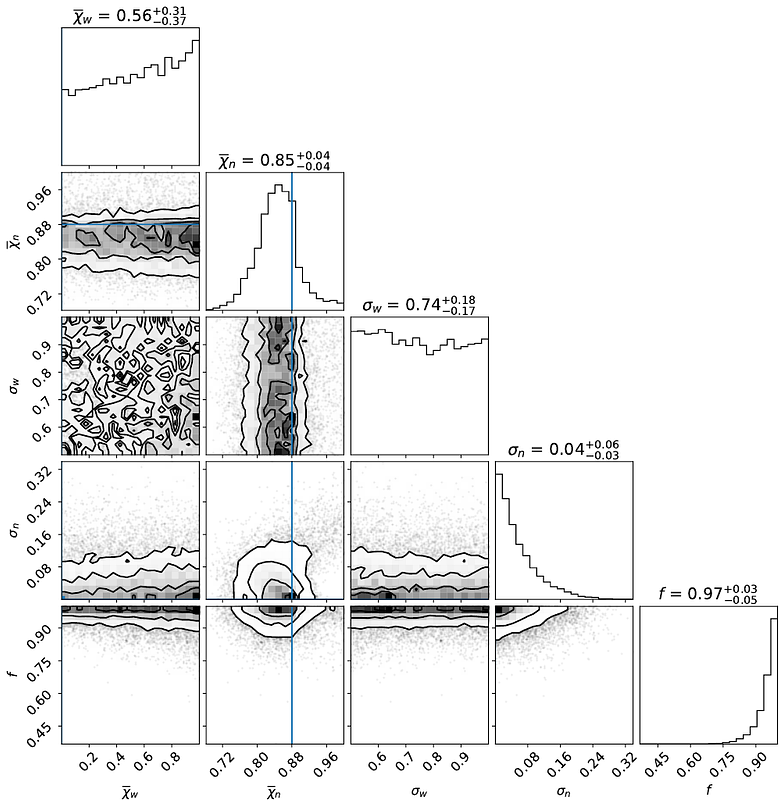A universal natal spin in stellar-mass black holes

A universal natal spin in stellar-mass black holes
Shu-Xu Yi, Tian-Yong Cao, Shuang-Nan Zhang
AbstractA stellar mass black hole (BH) is believed to be formed as the result of the core collapse of a massive star at the end of its evolution. For a class of Gamma-Ray Bursts (GRBs), it is widely believed that their centre engines are just these stellar-mass BHs, which accrete the collapsing matter in hyper-accretion mode. In such systems, a popular scenario is that the magnetic field supported in the accretion disk extracts the rotational energy of the spinning BH and launch a jet on one hand, and the accretion of the infalling matter of the collapse will increase the BH's rotational energy on the other hand. However, the detailed physical processes of the above scenario are still not well understood. Here we report that when the accretion process is dominated by a Magnetically-Arrested-Disk (MAD), the above mentioned two competing processes link to each other, so that the spin evolution of the BH can be written in a simple form. Most interestingly, when the total accreted mass is enough, the BH spin will always reach to an equilibrium value peaked at $\chi\sim0.88$. This value does not depend on the initial mass and spin of the BH, as well as the history of accretion. This model predicts that there is a population of stellar-mass BH which possess a universal spin at the end of the collapsing accretion. We test this prediction against the 3rd gravitational wave (GW) catalogue (GWTC-3) and found that the distribution of the spin of the secondary BH is centred narrowly around $0.85\pm 0.05$ as predicted. Applying this model to the parameters of observed parameters in GWTC-3 and further GW catalogues, it is possible to infer the initial mass and spin distributions of the binary BHs detected with GW.